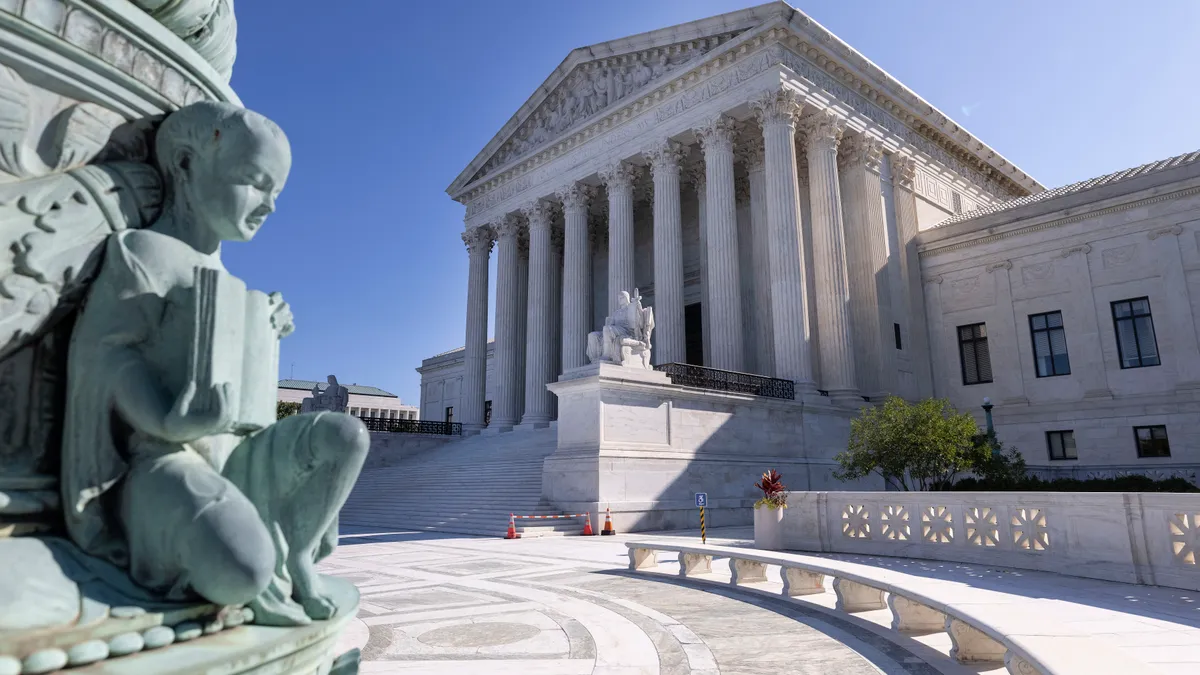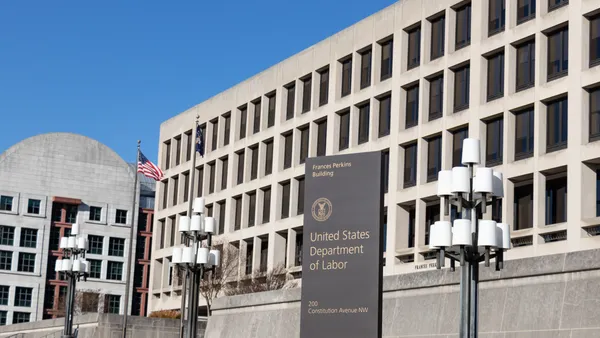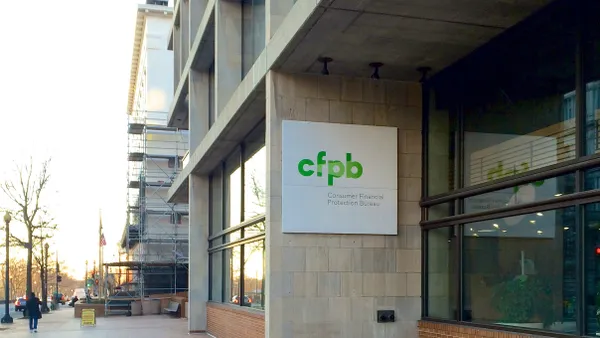Dive Brief:
- Supreme Court justices in oral arguments this week appeared skeptical of letting investors sue companies for fraud when management leaves out material risks in the narrative portion of their financial filings.
- Macquarie Infrastructure, an energy supply company, sought Supreme Court review of a 2nd Circuit decision that would open the door for Moab Partners, a hedge fund, to sue the company for failing to disclose in its financial reports that one of its subsidiaries faced material risks from a potential rule change.
- When the rule in fact changed, the subsidiary lost a major source of revenue, triggering a 40% drop in revenue and a 41% drop in Macquarie’s stock value in one day. Moab, the lead plaintiff in a pending class action, argues that the company’s failure to mention the risk in the narrative portion of its financial filings is the kind of thing it can sue for under securities law. Macquarie says it’s not and, should the top court rule that it is, companies would be forced to layer their narratives with risks or face a flood of lawsuits.
Dive Insight:
Investors have a right to sue under Rule 10b-5 of the Securities Exchange Act, which permits private actions if a company knowingly makes a statement that’s false or is considered a half truth — that is, it’s true but it doesn’t tell the full story. Absent the rest of the story, the statement is misleading. There’s no affirmative duty under Rule 10b-5 for companies to disclose anything.
In its lawsuit against Macquarie, Moab argues the company failed to disclose a material risk to one of its subsidiaries in the narrative portion of its financial filings — that the International Maritime Organization was considering a 2020 rule change that would restrict the use of No. 6 fuel oil, which is used in shipping vessels and which formed a big part of the subsidiary’s business.
Under Item 303 of Regulation S-K, which governs what companies disclose in the narrative portion of their financial statements, known as management’s discussion and analysis, or MD&A, the purpose is to let investors and others know how management views the business landscape they’re operating in, which would typically include looking at trends or looming risks to the company.
Although Item 303 isn’t specific about what management should or shouldn’t disclose, the Securities and Exchange Commission can and does sue companies if it appears management knowingly leaves out material risks. But investors don’t have the same right to sue for disclosure failure under Item 303.
In its argument, Moab says a material omission in Item 303 constitutes the kind of omitted information that can make a statement under Rule 10b-5 misleading, and thus actionable.
“This case involves a classic 10b-5 misleading half-truth,” David Frederick of Kellogg, Hansen, Todd, Figel & Frederick told the justices. “Petitioners disclosed a few known trends that would affect their bottom line but omitted the IMO 2020 uncertainty that would decimate 40% of their revenue.”
In its counter-argument, Macquarie says failing to disclose something in the MD&A can’t be imported into the rights under Rule 10b-5.
“The text [of Rule 10b-5] doesn’t permit eliding the statement requirement by treating the entire management narrative as misleading if one thing is left out,” Linda Coberly of Winston & Strawn told the justices. “The PSLRA [Private Securities Litigation Reform Act] shows that Congress had something far more specific in mind by the word ‘statement.’ The text also doesn’t permit recasting a claim about what a 10-K [filing form] does or doesn’t say as a claim involving a fraudulent scheme or act.”
In their questions, the justices came back to whether there must be a specific statement that’s made under Rule 10b-5 that doesn’t tell the full story for there to be grounds for a complaint or whether the MD&A itself counts as a statement that would be misleading if it doesn’t include mention of something that could be a material risk.
“If in the MD&A the company says there are three trends the investor should know about when you think about our future sales, and it lists three trends, but it doesn’t list a fourth that’s actually much more consequential … has that satisfied the requirement” to be a misleading statement under Rule 10b-5? Associate Justice Elena Kagan asked.
If the court ends up affirming the 2nd Circuit, effectively seeing an omission in the MD&A as the reason a statement under 10b-5 is misleading, that could open the door to a flood of private lawsuits by investors.
“Securities litigation is very expensive and very protracted,” Elizabeth Gingold Clark of Alston & Bird told Bloomberg Law. “That becomes expensive.”
In his analysis of the case, James Beha of Baker Botts said such a ruling would go against the intent of Item 303.
“Permitting investor claims based on alleged violations of Item 303 … undermines Item 303’s purpose, encouraging heavily lawyered prophylactic securities disclosures rather than providing investors with meaningful insight on management’s views about a company’s business,” Beha said.
The case is Macquarie Infrastructure v. Moab Partners.











